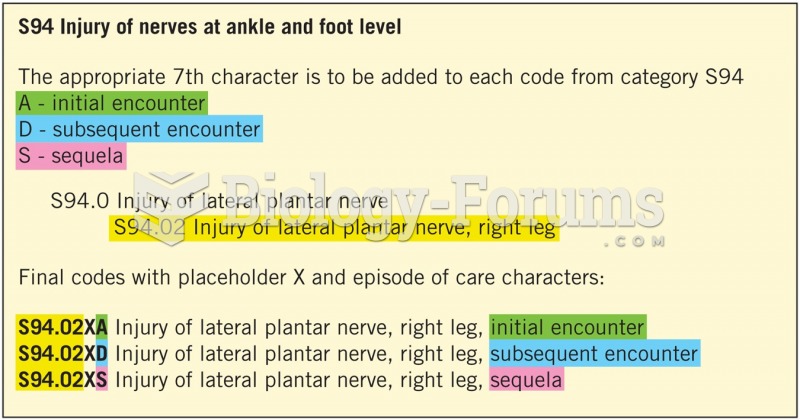|
|
|
Asthma cases in Americans are about 75% higher today than they were in 1980.
People about to have surgery must tell their health care providers about all supplements they take.
The heart is located in the center of the chest, with part of it tipped slightly so that it taps against the left side of the chest.
One way to reduce acid reflux is to lose two or three pounds. Most people lose weight in the belly area first when they increase exercise, meaning that heartburn can be reduced quickly by this method.
Your skin wrinkles if you stay in the bathtub a long time because the outermost layer of skin (which consists of dead keratin) swells when it absorbs water. It is tightly attached to the skin below it, so it compensates for the increased area by wrinkling. This happens to the hands and feet because they have the thickest layer of dead keratin cells.







